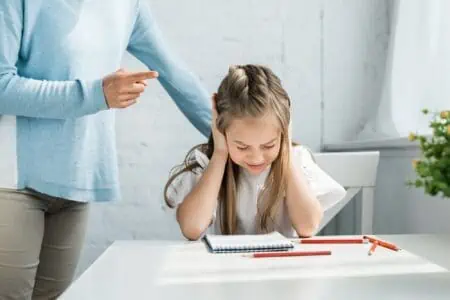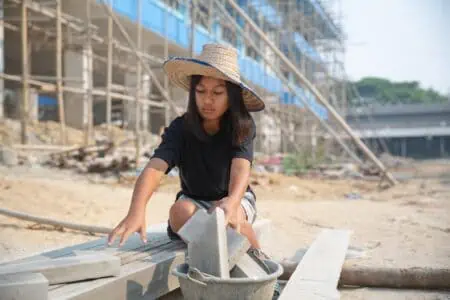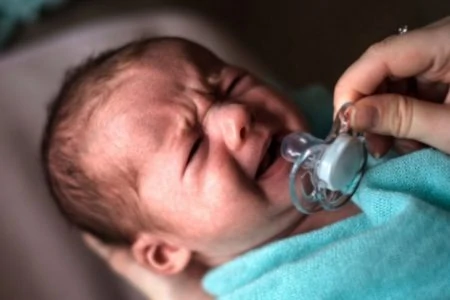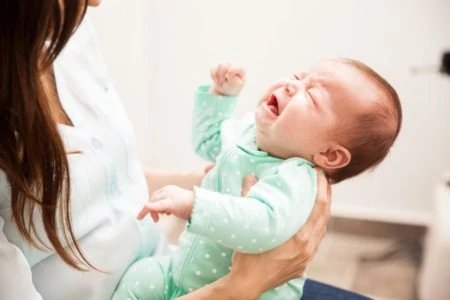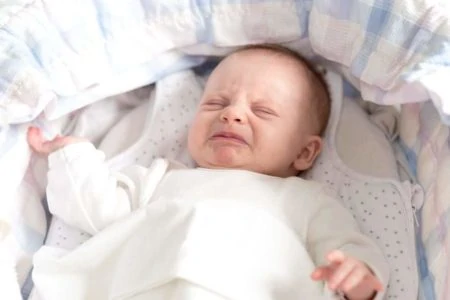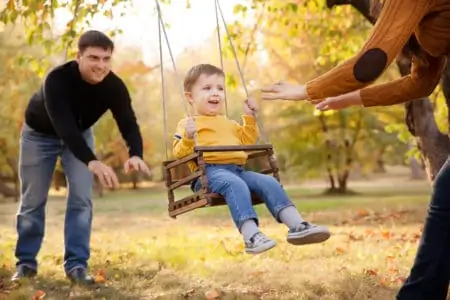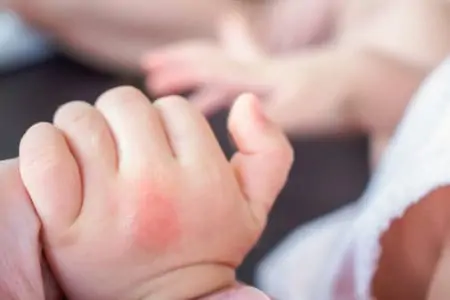The repercussions often follow victims into adulthood. This can look like mental health struggles, academic difficulties, or a continuation of the cycle of abuse. We have gathered the hard data to help you understand the scope of the problem.
This guide covers national statistics, warning signs, and the long-term effects of maltreatment. We also provide resources so you can help make a difference.
Key Takeaways
- Prevalence is high: At least one in every seven children in the U.S. has experienced child abuse or neglect in the past year.
- Neglect is most common: Neglect is the most frequently reported form of maltreatment, followed by physical and sexual abuse.
- Long-term health impact: Victims often suffer from “Adverse Childhood Experiences” (ACEs), leading to higher risks of heart disease, depression, and substance issues later in life.
- Economic cost: The yearly economic burden of child abuse and neglect in the United States is estimated at nearly $592 billion.
Defining Child Neglect and Abuse
Understanding the specific definitions of maltreatment is the first step in prevention. Child neglect is defined as the failure to care for a child responsibly (1). This means failing to provide necessary food, clothing, medical care, shelter, or supervision.
It isn’t just about basic needs, either. Many states define neglect as the failure to provide medical or mental health care. Eight states specifically identify medical neglect as withholding treatment or nutrition from disabled children with life-threatening conditions.
Child abuse falls into several categories: physical, sexual, and emotional. It also encompasses parental substance abuse and child abandonment.
Physical Abuse
This is defined as “nonaccidental physical injury to the child.” Examples include kicking, burning, hitting, or biting. In 18 states, human trafficking is also legally categorized under physical abuse.
Sexual Abuse
This involves involving a child in sexual activities. It includes fondling, penetration, incest, prostitution, or exposing a child to pornography.
Emotional Abuse
This is an injury to a child’s psychological capacity or emotional stability. It often results in anxiety, depression, withdrawal, or aggression. While physical scars fade, emotional abuse can permanently alter a child’s development.
30 Shocking Child Abuse Statistics
Every child deserves a safe, loving home. Unfortunately, the data shows that millions do not have this privilege. Here are 30 crucial statistics regarding child maltreatment in America.
Keep In Mind
Prevalence of Child Abuse
The numbers are often higher than the general public realizes. Because many cases go unreported, the actual figures may be even more staggering. Here is the breakdown of the current data.
- 1 in 7 kids face abuse: At least one in seven children has been a victim of abuse or neglect in the past year (2). Some studies suggest this number is conservative.
- Lifetime prevalence is high: A separate study suggests that one in four children will experience some form of maltreatment at some point during their childhood (3).
- Millions of reports filed: In 2021, child protection agencies received referrals involving 7.2 million children (4).
- States with high report volumes: The states with the highest raw numbers of child abuse reports typically include Texas, California, New York, Illinois, and Ohio (5).
- Neglect is the leader: Neglect is the most common type of maltreatment. Research shows roughly 78 percent of cases involve neglect, 18 percent involve physical abuse, and 9 percent involve sexual abuse.
- Daily fatalities: Tragically, an estimated 4.8 children die every day in the U.S. due to abuse or neglect (6). This rate has seen an upward trend since 1998.
- Economic burden: The total lifetime economic burden associated with child abuse and neglect was estimated at $592 billion in 2018. This rivals the costs associated with major public health issues like heart disease and diabetes.
- Youngest are most vulnerable: Babies and toddlers are at the highest risk (7). Children under one year old account for 15 percent of victims, while 28 percent are under the age of two.
Effects of Child Abuse in Adulthood
Trauma changes the brain. This concept is often referred to as Adverse Childhood Experiences (ACEs). The stress of abuse can rewire a child’s development, leading to profound issues in adulthood.
- High-risk health behaviors: Survivors are statistically more likely to smoke, abuse drugs or alcohol, and engage in high-risk sexual behavior (8).
- Physical symptoms manifest: Survivors often report chronic physical issues such as severe headaches, insomnia, gastrointestinal problems, chest pain, and shortness of breath.
- Cycle of victimization: Children who are abused are at a higher risk of being victimized again in adulthood, often in domestic relationships.
- Mental health struggles: Maltreatment is strongly linked to anxiety, depression, low self-esteem, and Post-Traumatic Stress Disorder (PTSD) (9).
- Relationship difficulties: About 33 percent of childhood victims experience psychiatric disorders that impact their ability to form and maintain healthy adult relationships (10).
- Negative emotional bias: Survivors are often conditioned to perceive negative emotions more readily than positive ones compared to non-victims (11).
- Academic struggles: Abuse impacts cognitive development. Victims are at higher risk for poor academic performance, difficulty processing tasks, and memory retention issues.
- Correlation with crime: Adults who were abused as children are roughly twice as likely to commit crimes compared to those who were not (12). This includes a higher likelihood of juvenile arrests.
Prevention and Risk Factors
Identifying risk factors isn’t about blaming parents. It is about understanding where to target support and prevention efforts. When communities address these root causes, abuse rates go down.
- Poverty increases risk: Financial stress is a major driver. Abuse rates are five times higher for children living in poverty or low socioeconomic status.
- Drug abuse in the home: Substance use disorders compromise parenting abilities. About 26 percent of victims had a caregiver who abused drugs (13).
- Domestic violence connection: Violence begets violence. Approximately 28 percent of child abuse victims lived in homes where domestic violence was present.
- Alcohol abuse: Alcohol plays a significant role, with 11.5 percent of victims having a caregiver who abuses alcohol.
- Prenatal exposure: In 2021, over 49,000 infants were identified with prenatal substance exposure. These infants enter the world already at a higher risk for neglect and health complications.
- Intergenerational trauma: Without intervention, the cycle continues. Roughly 30 percent of child abuse victims may go on to abuse their own children (14).
- Unplanned pregnancies: Children who were unintended or unwanted carry an increased statistical risk of neglect and psychological aggression (15).
Facts About Laws, Policies, and Interventions
The legal landscape for child protection is complex. It involves federal mandates, state-specific laws, and local enforcement. Here is how the system works to protect vulnerable youth.
- Millions receive help: While 7.2 million children were involved in reports in 2021, Child Protective Services (CPS) investigated roughly 3 million of those cases. About 1.8 million children ultimately received prevention services (16).
- CACs are effective: Children’s Advocacy Centers (CACs) serve over 380,000 kids annually. They provide forensic interviews and therapy. Notably, 98 percent of offenders prosecuted with CAC help never hurt another child.
- The cornerstone law (CAPTA): The Child Abuse Prevention and Treatment Act (CAPTA), enacted in 1974, is the primary federal law (17). It provides funding for states to investigate and prevent abuse.
- State definitions vary: While federal law sets the baseline, each state defines “neglect” differently (18). Generally, it involves a lapse in care (intentional or not) that endangers the child.
- Systemic challenges: The system is not perfect. Issues include children languishing in foster care and racial disparities in prosecution. Poor families and people of color are often disproportionately investigated.
- Economic support works: Prevention isn’t just about policing; it’s about support. Strategies like tax credits, housing assistance, and family-friendly workplace policies are proven to reduce abuse rates (19).
- Community involvement: Parents need villages. Community programs that normalize seeking help and offer respite care are vital. Education on positive parenting techniques can replace corporal punishment.
- Enhanced surveillance: The CDC is expanding how it tracks abuse (20). By monitoring data from ERs, schools, and police, authorities hope to spot trends and intervene faster.
What Are the Warning Signs of Child Neglect?
Because abuse often happens behind closed doors, outside observers are the first line of defense. Teachers, neighbors, and relatives should watch for these 12 red flags.
- Hygiene issues: Watch for children who consistently appear dirty, smell bad, or have severe dental decay.
- Inappropriate clothing: A child wearing shorts in freezing weather or long sleeves in a heatwave (potentially to hide bruises) is a warning sign.
- Chronic diaper rash: In infants, severe and untreated diaper rash can indicate that the child is being left unchanged for long periods.
- Unexplained absences: Frequent school absences without a valid medical reason often signal trouble at home.
- Developmental delays: Signs include excessive crying in infants, regression (like bedwetting in an older child), or extreme fear of parents.
- Aggression: Abused children may act out the violence they see. Look for aggression toward peers, cruelty to animals, or destruction of property.
- Untreated medical needs: This includes ignoring vision or hearing problems, skipping necessary surgeries, or failing to treat chronic conditions like asthma.
- Suspicious injuries: Bruises on soft parts of the body (cheeks, stomach, thighs, buttocks) are red flags. Patterned injuries that look like belts, hands, or cords are clear signs of abuse.
- Hoarding food: Neglected children are often hungry. They may steal food, hoard snacks, or eat incredibly fast when food is available (21).
- Sexual knowledge: Children who display sexual knowledge or behavior far beyond their age level may be victims of sexual abuse. Physical signs include trouble walking or sitting.
- Environmental hazards: Living conditions matter. A home with no heat, running water, or exposed wiring, or young children left alone for hours, constitutes neglect.
- Parentification: If a young child is forced to act as the primary caregiver for younger siblings or even their own parents, this is a form of neglect.
How To Report Abuse
For emergencies: Call 911.
For reports: Call the Childhelp National Child Abuse Hotline at 1-800-4-A-CHILD (1-800-422-4453).
Mandatory Reporters: If you are a teacher, doctor, nurse, social worker, or police officer, you are legally required to report. Failing to do so can result in criminal charges.
Parents needing help: If you feel like you might hurt your child, reach out before it happens. Call the National Parent Helpline at 1-855-4A PARENT (1-855-427-2736).
FAQs
Playing Our Part in Prevention
Child abuse is a heartbreaking national issue, but it is not inevitable. We can all play a role in stopping it. The first step is learning the signs and refusing to look away.
You can make a difference by volunteering with organizations like Healthy Families America or the American Professional Society on the Abuse of Children. Even small actions, like checking in on a stressed parent in your neighborhood, can help reduce the isolation that often precedes abuse.
If you are a survivor, know that healing is possible. Organizations like Enough Abuse and Childhelp offer specialized support to help you reclaim your life.
For parents who are struggling: it takes strength to ask for help. Resources like Parents Anonymous or local counseling services can give you the tools to manage anger and stress. Seeking help is the bravest thing you can do for your family.
